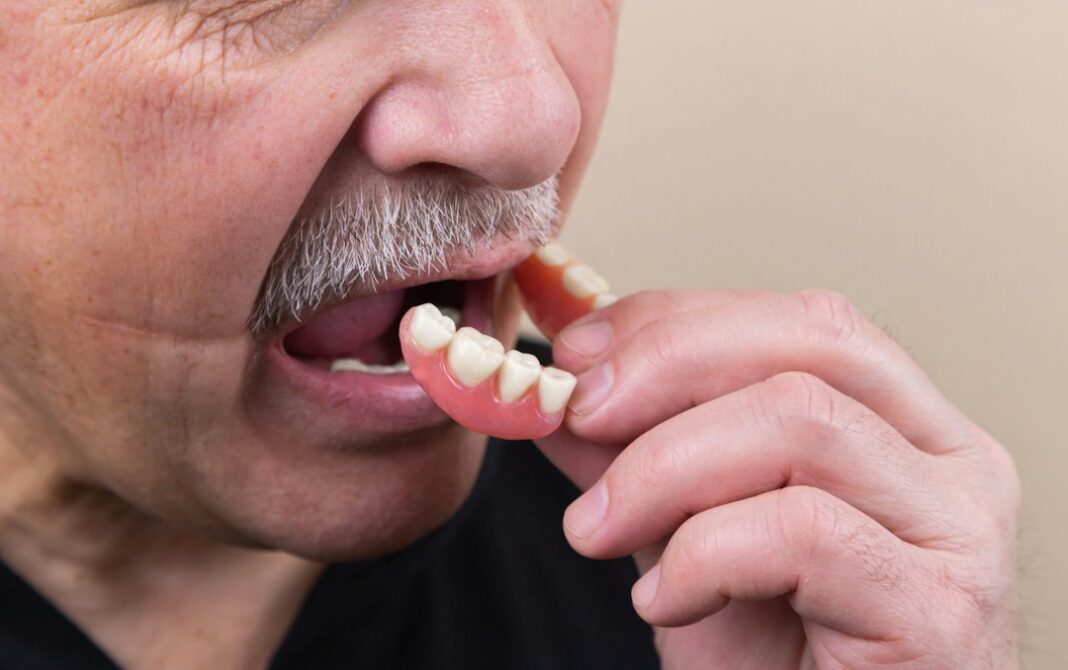“This post may contain affiliate links, if you click a link we may earn a commission if you purchase from that merchant.”
Dental insurance is a type of insurance coverage that helps individuals pay for dental care expenses. It is designed to provide financial protection and assistance for various dental procedures, including preventative care, restorative care, orthodontics, endodontics, periodontics, prosthodontics, and cosmetic dentistry. Dental insurance plays a crucial role in maintaining good oral health by making dental care more affordable and accessible.
Good oral health is essential for overall well-being. Poor oral health can lead to various dental problems such as cavities, gum disease, tooth loss, and even systemic health issues like heart disease and diabetes. Regular dental check-ups and cleanings are necessary to prevent these problems and detect any issues early on. However, the cost of dental care can be a significant barrier for many individuals, especially those without insurance. Dental insurance helps alleviate this financial burden and encourages individuals to seek regular dental care, ultimately promoting better oral health.
Table of Contents
Key Takeaways
- Dental insurance is important for maintaining good oral health.
- Some dental procedures, such as cosmetic treatments, may not be covered by insurance.
- Dental insurance typically has maximum benefits and annual limits.
- Regular check-ups and cleanings are usually covered by dental insurance.
- Fillings, crowns, and bridges are among the restorative dental procedures that may be covered by insurance.
Exclusions: What Dental Procedures are Typically Not Covered by Insurance?
While dental insurance covers a wide range of dental procedures, there are certain treatments that are typically not covered. These exclusions vary depending on the insurance plan, but some common procedures that are not covered include cosmetic procedures, experimental treatments, and procedures that are not deemed medically necessary.
Cosmetic procedures such as teeth whitening and veneers are often considered elective and not medically necessary. Therefore, they are usually not covered by dental insurance. Experimental treatments or procedures that have not been proven to be effective or safe may also be excluded from coverage. Additionally, some insurance plans may not cover procedures that are not deemed medically necessary by the insurance provider. For example, if a procedure is considered purely cosmetic and does not have any functional or health benefits, it may not be covered.
It is important for individuals to carefully review their dental insurance policy to understand what procedures are excluded from coverage. This will help them make informed decisions about their dental care and budget accordingly for any treatments that may not be covered.
Limitations: What are the Maximum Benefits and Annual Limits of Dental Insurance?
Dental insurance plans often have limitations in terms of maximum benefits and annual limits. Maximum benefits refer to the maximum amount of money that the insurance company will pay for dental procedures within a specific time period, usually a year. Annual limits, on the other hand, refer to the maximum number of dental procedures or visits that are covered within a year.
For example, a dental insurance plan may have a maximum benefit of $1,500 per year. This means that the insurance company will pay up to $1,500 for dental procedures within that year. If the total cost of the procedures exceeds $1,500, the individual will be responsible for paying the remaining balance out of pocket.
Similarly, a dental insurance plan may have an annual limit of two cleanings and check-ups per year. This means that the insurance company will cover the cost of two cleanings and check-ups within a year. If the individual requires additional cleanings or check-ups, they will need to pay for them out of pocket.
These limitations can significantly impact coverage and individuals’ out-of-pocket expenses. It is important for individuals to understand these limitations and plan their dental care accordingly to maximize their benefits and minimize their costs.
Preventative Care: How Does Dental Insurance Cover Regular Check-Ups and Cleanings?
Preventative care is an essential part of maintaining good oral health. Regular check-ups and cleanings help prevent dental problems such as cavities, gum disease, and tooth loss. Dental insurance typically covers preventative care, although coverage may vary depending on the insurance plan.
Most dental insurance plans cover two check-ups and cleanings per year. These visits usually include an examination by the dentist, X-rays if necessary, and a professional cleaning to remove plaque and tartar buildup. Some insurance plans may also cover additional preventative treatments such as fluoride treatments or sealants for children.
It is important for individuals to take advantage of their dental insurance coverage for preventative care. Regular check-ups and cleanings can help detect any dental issues early on and prevent them from progressing into more serious problems. By utilizing their dental insurance for preventative care, individuals can maintain good oral health and potentially avoid costly and invasive treatments in the future.
Restorative Care: What Dental Procedures are Covered for Fillings, Crowns, and Bridges?
Restorative care refers to dental procedures that restore or replace damaged or missing teeth. This includes treatments such as fillings, crowns, bridges, and dentures. Dental insurance typically covers a portion of the cost for these restorative procedures, although coverage may vary depending on the insurance plan.
For example, dental insurance may cover 80% of the cost of fillings, with the individual responsible for the remaining 20%. Similarly, insurance may cover a percentage of the cost for crowns and bridges, with the individual responsible for the remaining balance.
It is important for individuals to review their dental insurance policy to understand the coverage for restorative care. This will help them budget accordingly and plan for any out-of-pocket expenses that may arise from these procedures.
Orthodontics: Does Dental Insurance Cover Braces and Other Orthodontic Treatments?
Orthodontic treatments, such as braces or aligners, are used to correct misaligned teeth and bite issues. These treatments can be quite expensive, but some dental insurance plans offer coverage for orthodontics.
However, coverage for orthodontic treatments is often limited and may have specific requirements. For example, some insurance plans may only cover orthodontic treatments for children under a certain age or individuals with severe bite issues. Additionally, there may be a waiting period before orthodontic coverage kicks in, and pre-authorization may be required.
It is important for individuals considering orthodontic treatments to carefully review their dental insurance policy and understand the coverage and requirements. This will help them make informed decisions about their orthodontic care and budget accordingly for any out-of-pocket expenses.
Endodontics: What Dental Procedures are Covered for Root Canals and Other Endodontic Treatments?
Endodontic treatments focus on the treatment of the dental pulp and root canals. This includes procedures such as root canals, apicoectomies, and pulpotomies. Dental insurance typically covers a portion of the cost for these endodontic procedures, although coverage may vary depending on the insurance plan.
For example, dental insurance may cover 50% of the cost of a root canal, with the individual responsible for the remaining 50%. Similarly, insurance may cover a percentage of the cost for other endodontic treatments, with the individual responsible for the remaining balance.
It is important for individuals to review their dental insurance policy to understand the coverage for endodontic treatments. This will help them budget accordingly and plan for any out-of-pocket expenses that may arise from these procedures.
Periodontics: How Does Dental Insurance Cover Gum Disease and Other Periodontal Treatments?
Periodontal treatments focus on the prevention and treatment of gum disease. This includes procedures such as scaling and root planing, gum surgery, and periodontal maintenance. Dental insurance typically covers a portion of the cost for these periodontal procedures, although coverage may vary depending on the insurance plan.
For example, dental insurance may cover 80% of the cost of scaling and root planing, with the individual responsible for the remaining 20%. Similarly, insurance may cover a percentage of the cost for other periodontal treatments, with the individual responsible for the remaining balance.
It is important for individuals to review their dental insurance policy to understand the coverage for periodontal treatments. This will help them budget accordingly and plan for any out-of-pocket expenses that may arise from these procedures.
Prosthodontics: What Dental Procedures are Covered for Dentures, Implants, and Other Prosthetic Devices?
Prosthodontic treatments focus on the replacement of missing teeth with dentures, implants, or other prosthetic devices. Dental insurance typically covers a portion of the cost for these prosthodontic procedures, although coverage may vary depending on the insurance plan.
For example, dental insurance may cover 50% of the cost of dentures, with the individual responsible for the remaining 50%. Similarly, insurance may cover a percentage of the cost for dental implants or other prosthetic devices, with the individual responsible for the remaining balance.
It is important for individuals to review their dental insurance policy to understand the coverage for prosthodontic treatments. This will help them budget accordingly and plan for any out-of-pocket expenses that may arise from these procedures.
Cosmetic Dentistry: Does Dental Insurance Cover Teeth Whitening and Other Cosmetic Procedures?
Cosmetic dentistry focuses on improving the appearance of teeth and smiles. While dental insurance primarily focuses on covering procedures that are medically necessary, some cosmetic procedures may be covered if they have functional benefits. However, coverage for cosmetic procedures is often limited and may vary depending on the insurance plan.
For example, dental insurance may cover a portion of the cost of a dental crown if it is needed to restore a damaged tooth. However, if a crown is purely cosmetic and not medically necessary, it may not be covered. Similarly, teeth whitening is often considered purely cosmetic and not medically necessary, so it is typically not covered by dental insurance.
It is important for individuals considering cosmetic procedures to carefully review their dental insurance policy and understand the coverage and requirements. This will help them make informed decisions about their cosmetic dental care and budget accordingly for any out-of-pocket expenses.
Dental insurance plays a crucial role in maintaining good oral health by making dental care more affordable and accessible. It covers a wide range of dental procedures, including preventative care, restorative care, orthodontics, endodontics, periodontics, prosthodontics, and cosmetic dentistry. While there may be exclusions and limitations in coverage, dental insurance provides financial protection and assistance for various dental treatments.
Regular check-ups and cleanings are covered by dental insurance and are essential for preventing dental problems. Restorative care, such as fillings, crowns, and bridges, is also typically covered to restore damaged or missing teeth. Orthodontic treatments, endodontic treatments, periodontal treatments, and prosthodontic treatments may have coverage limitations and requirements. Cosmetic procedures are often not covered unless they have functional benefits.
In summary, dental insurance is important for maintaining good oral health by making dental care more affordable and accessible. Understanding the coverage and limitations of dental insurance can help individuals make informed decisions about their dental care and budget accordingly for any out-of-pocket expenses. By utilizing their dental insurance effectively, individuals can prioritize their oral health and prevent costly dental problems in the future.
If you’re looking to understand the fine print and exclusions of dental insurance, you may also be interested in learning about the best dental insurance for braces. This article provides valuable information on finding the right dental insurance plan that covers braces and orthodontic treatments. It’s important to have a comprehensive understanding of your dental insurance coverage to ensure you’re getting the most out of your policy. Check out this article on the best dental insurance for braces to make an informed decision for your dental needs.
FAQs
What are exclusions in dental insurance?
Exclusions in dental insurance refer to the dental services that are not covered by the insurance policy. These services may include cosmetic procedures, orthodontic treatment, and dental implants.
What are limitations in dental insurance?
Limitations in dental insurance refer to the restrictions on the coverage of certain dental services. These limitations may include annual maximums, waiting periods, and frequency limitations.
Why do dental insurance policies have exclusions and limitations?
Dental insurance policies have exclusions and limitations to control costs and prevent abuse of the insurance system. By limiting coverage to necessary and preventive services, insurance companies can keep premiums affordable for policyholders.
How can I find out what is excluded or limited in my dental insurance policy?
You can find out what is excluded or limited in your dental insurance policy by reading the policy documents carefully. You can also contact your insurance provider or dental office for more information.
Can I still receive dental services that are excluded or limited by my insurance policy?
Yes, you can still receive dental services that are excluded or limited by your insurance policy, but you will have to pay for them out of pocket. It is important to discuss the cost of these services with your dental provider before receiving treatment.
Are there any exceptions to exclusions or limitations in dental insurance?
There may be exceptions to exclusions or limitations in dental insurance, such as in cases of medical necessity. It is important to check with your insurance provider or dental office to see if an exception applies to your situation.



































